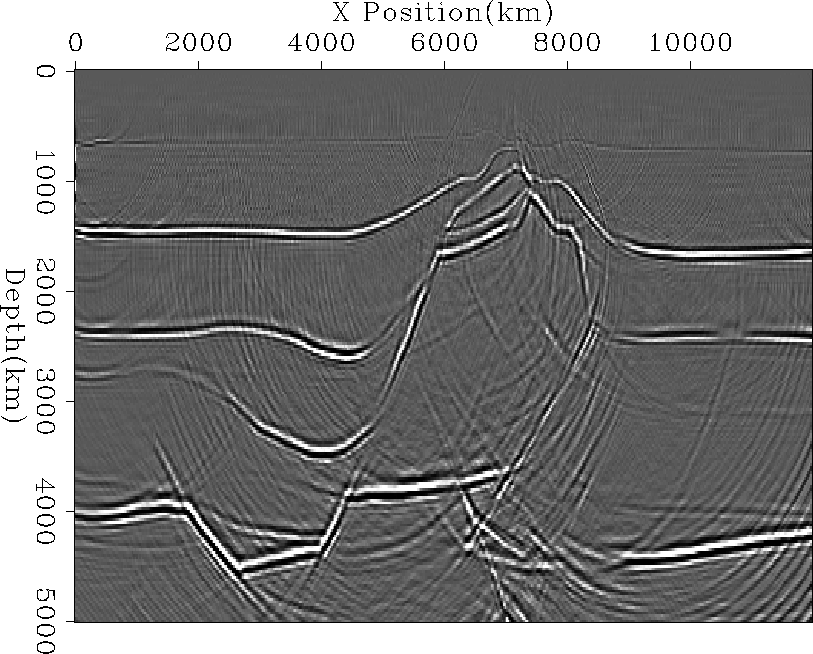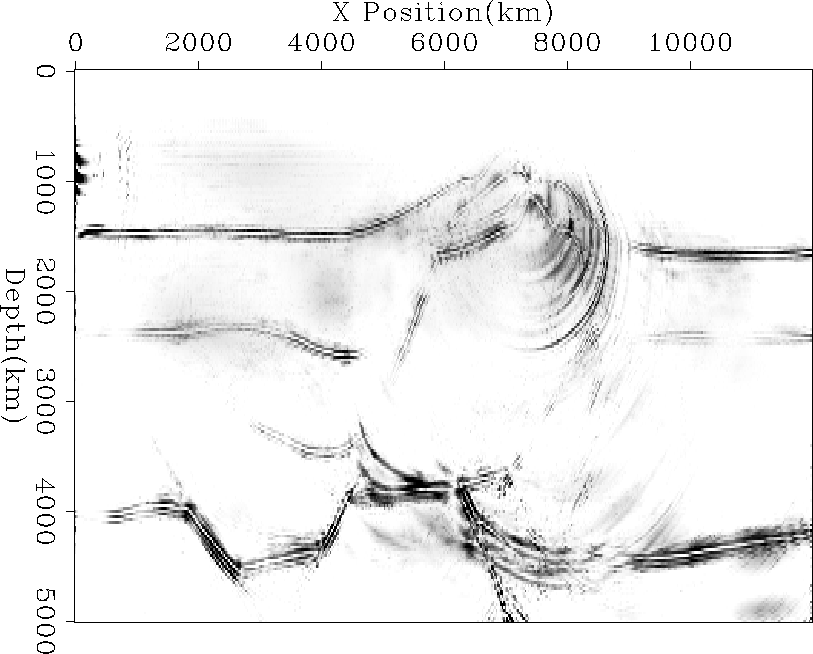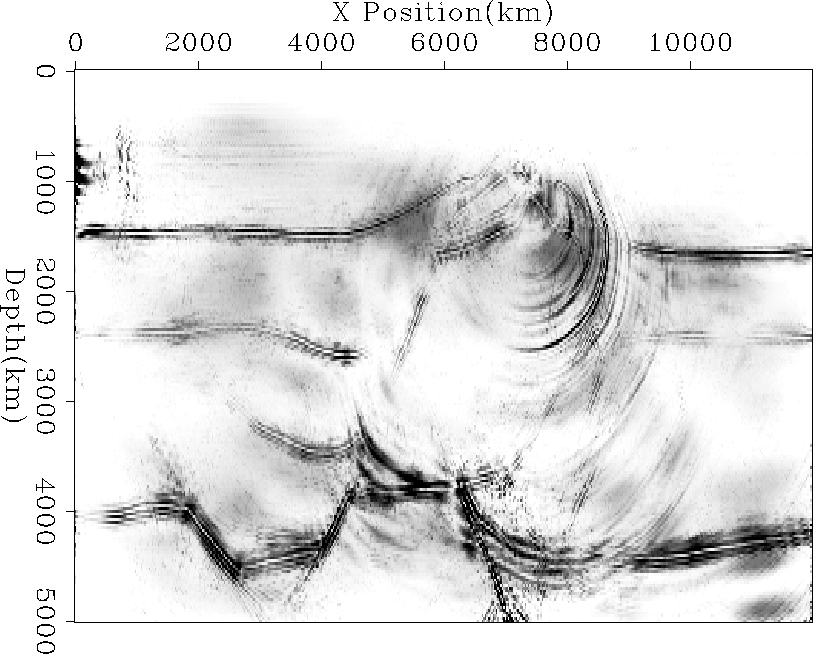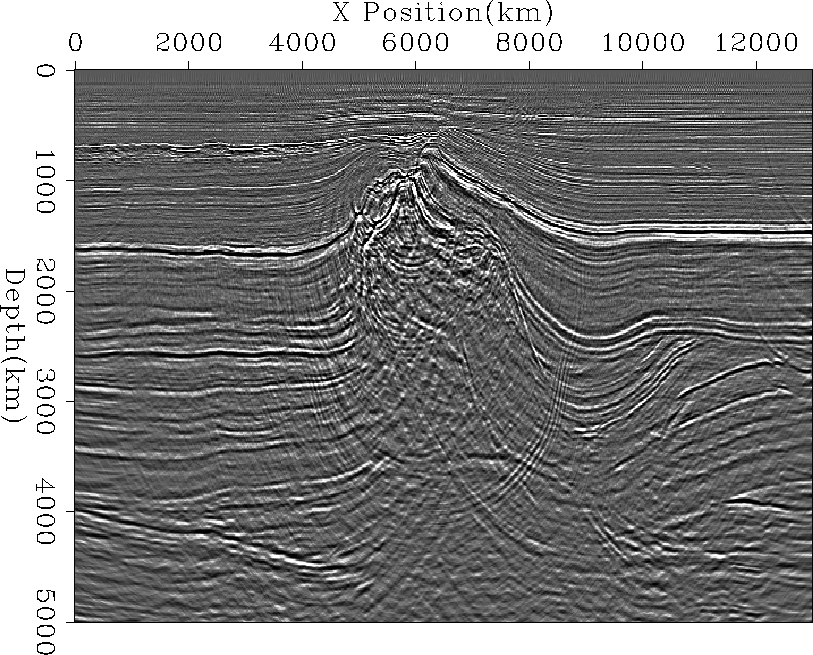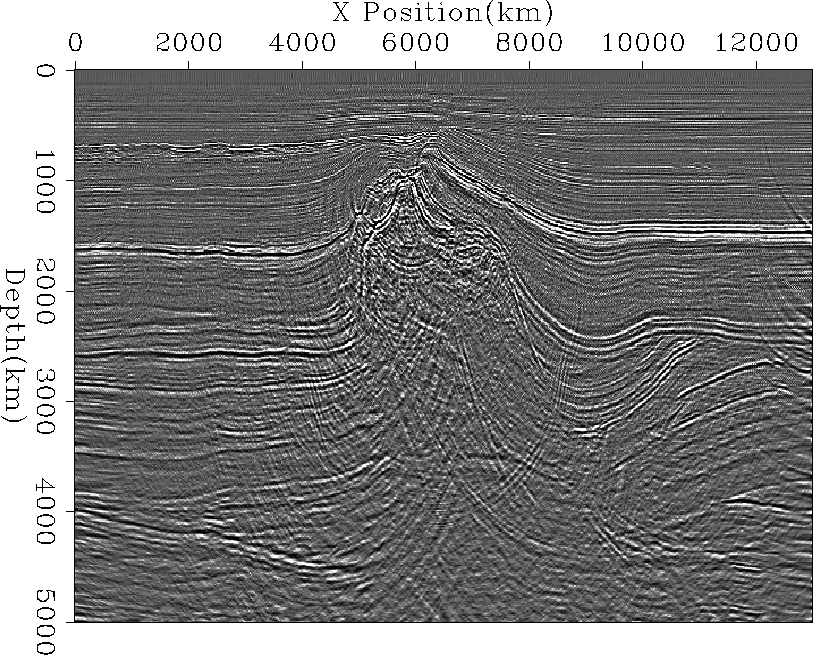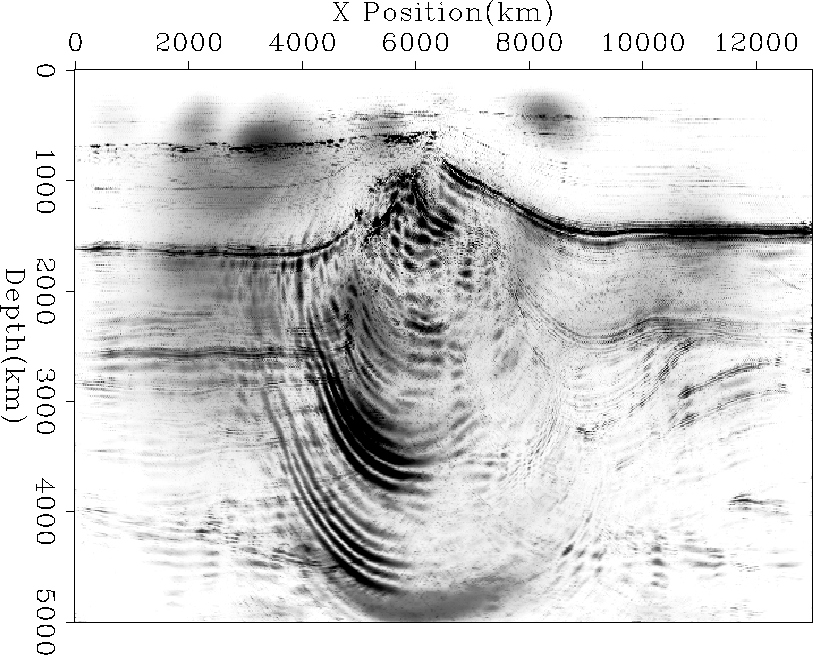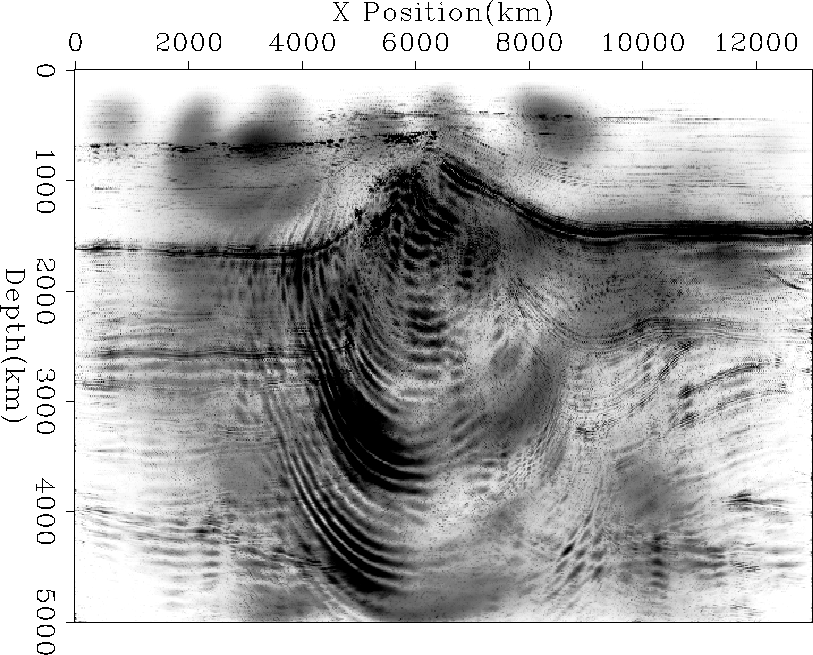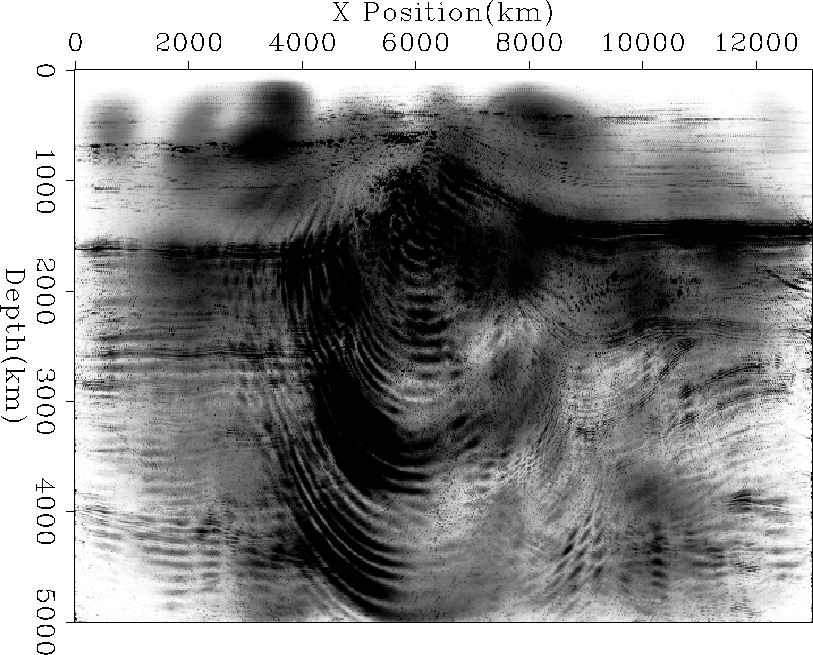




Next: Conclusions
Up: Application to Kirchhoff imaging
Previous: Resolution estimation algorithm
We began our experiments on the synthetic Elf North Sea dataset.
Figure 1 shows the result of conjugate gradient
inversion. The deepest reflector seems to disappear as it passes
under the edge of the salt body. This behavior is known to
be caused by poor illumination Prucha et al. (1998).
Figures 2 through 5
show the estimated resolution for the synthetic dataset, with increasing
numbers of iteration. After only 5 iterations, there is high resolution
along the major reflectors (black indicates high resolution, white
indicates low resolution). Note that the area of poor illumination
has low resolution. As the number of iterations increases, the areas
between the reflectors become better resolved. This tells us that
conjugate gradient algorithm is spending most of its effort at low iterations
resolving model components around the reflector. It moves onto the
area between reflectors only at large iterations. This is not surprising behavior,
since most of the energy in the model space is found around the reflectors so
that is what will be minimized first.
synth-cg.5
Figure 1 Inversion result on synthetic.




 mdiag-synth-cg.5
mdiag-synth-cg.5
Figure 2 Resolution using conjugate gradient method after 5 iterations. Dark indicates higher resolution.




 mdiag-synth-cg.10
mdiag-synth-cg.10
Figure 3 Resolution using conjugate gradient method after 10 iterations. Dark indicates higher resolution.




 mdiag-synth-cg.15
mdiag-synth-cg.15
Figure 4 Resolution using conjugate gradient method after 15 iterations. Dark indicates higher resolution.




 mdiag-synth-cg.20
mdiag-synth-cg.20
Figure 5 Resolution using conjugate gradient method after 20 iterations. Dark indicates higher resolution.





After experimenting with the synthetic dataset, we conducted the same
trials on the real Elf North Sea dataset (Figure 6).
Note that the x-axis in the real dataset is reversed from that in
the synthetic so that the salt structure tilts to the left rather than
the right. Figures 8 through
11 show the results of increasing the
iterations for estimating the resolution. Once again, there are
Kirchhoff-type artifacts in all of the figures. Note that we again
see resolution energy beginning around the reflectors, spreading
to areas between reflectors at higher iterations. We can see corresponding
changes in our image. After 5 iterations the image shows strong
energy along the primaries reflectors, but is generally low frequency,
Figure 6. After
20 iterations we have an image with more noise, but also
a significantly higher frequency image. The later
iterations resolved smaller eigenvalues of the model, which corresponded
to higher frequency, lower amplitude portions of the model space.
real-cg.5
Figure 6 Inversion result on real data after 5 iterations.




 real-cg.20
real-cg.20
Figure 7 Inversion result on real data after 20 iterations.




 mdiag-real-cg.5
mdiag-real-cg.5
Figure 8 Resolution using conjugate gradient method after 5 iterations of the real data.




 mdiag-real-cg.10
mdiag-real-cg.10
Figure 9 Resolution using conjugate gradient method after 10 iterations of the real data.




 mdiag-real-cg.15
mdiag-real-cg.15
Figure 10 Resolution using conjugate gradient method after 15 iterations of the real data.




 mdiag-real-cg.20
mdiag-real-cg.20
Figure 11 Resolution using conjugate gradient method after 20 iterations of the real data.










Next: Conclusions
Up: Application to Kirchhoff imaging
Previous: Resolution estimation algorithm
Stanford Exploration Project
10/25/1999
